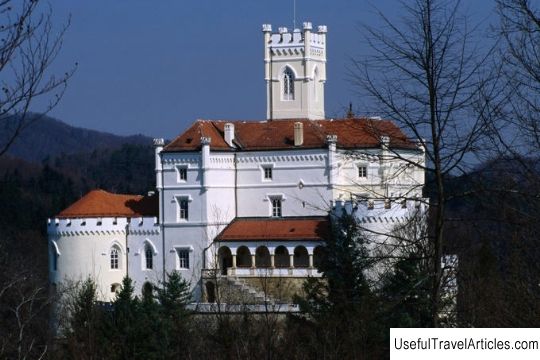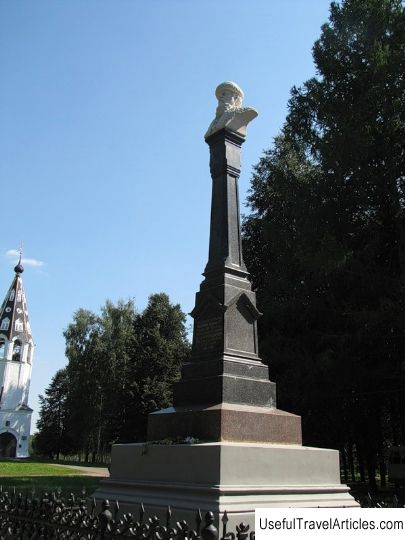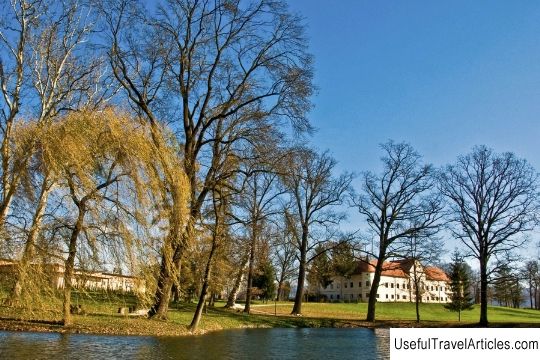Castle Trakoscan (Dvorac Trakoscan) description and photos - Croatia: Varazdin
Rating: 8,4/10 (6905 votes) 
Trakoscan Castle (Dvorac Trakoscan) description and photos - Croatia: Varazdin. Detailed information about the attraction. Description, photographs and a map showing the nearest significant objects. The name in English is Dvorac Trakoscan. Photo and descriptionTrakoscan Castle is possibly the most visited place in northern Croatia. A simple gravel path leads to the entrance, although the castle itself looks very majestic. Yellow and white stone walls, a drawbridge and luxurious lands all create a fabulous illusion around the fortress, which was built in the 13th century. Its condition was carefully maintained and today it is one of the best-preserved castles in the country. Trakoschan was built in the 13th century in the northwestern fortification system of Croatia as a small fortress to watch and control the roads. According to legend, Trakoschan was named after another fortification, which was located in the same place in ancient times. Another source claims that it was named after the knights who controlled the region in the early Middle Ages. The castle was first mentioned in written sources in 1334. It is not known who was the first owner of Trakoschan. At the end of the 14th century, the castle belonged to the counts of Celje, who were in charge of the entire Zagorje region. After the family died out, the castle was divided and changed owners. Only in 1566 the ownership was transferred to the state. King Maximilian handed over the castle to Yurai Draskovich for the services rendered, first personally, and then as a family heritage. This is how the Draskovic family came into the possession of Trakoschan. In the second half of the 18th century, Trakoschan castle was abandoned. Forgotten, it is badly dilapidated. And only in the middle of the 19th century, when the family again became interested in their property in the spirit of romanticism of a return to nature and family values, one of its representatives turned the castle into a residential estate. Subsequent generations lived in the castle from time to time until 1944, when they were forced to emigrate to Austria. The castle was nationalized shortly thereafter. The museum with a permanent exhibition was established in 1953. Today the castle is owned by Croatia. The castle itself displays different stages of construction. For several centuries it was used as a fortification, so all the renovations carried out at that time were more functional than aesthetic. The well-chosen location of the fortification and its observation tower made it strong and safe. The rapid development of firearms and active threatening attacks by the Turks forced the owners to further strengthen the castle. Thus, the second generation of the Draskovic family, Ivan and Peter, added the western tower. In the 19th century, Trakoschan acquired its present form. In 1840-1864, in one of the first stages of the restoration of the country, the castle was restored in the neo-Gothic style. He not only changed his appearance, but finally ceased to serve as a fortified structure. When the dam was built, the valley surrounding the castle turned into a large lake. After the reconstruction, several generations of the Draskovic family lived in the castle, who made several additional structures and fixtures. A northern tower was added above the entrance, as well as south-western terraces. At the end of World War II, Trakoschan was found in an abandoned and dilapidated state. After that, protective architectural and interior work was carried out. Over the past years, the castle has again undergone a thorough renovation. Inside, the castle is also very interesting and colorful. The first floor is made in the style of the 19th century - a lot of antique furniture, wood and portrait painting. On the upper floors, you'll find ancient weapons, a jumble of furniture, walls with exposed patches of original wallpaper, and a few original tapestries.          We also recommend reading Holy Trinity Sergiev Varnitsky Monastery description and photos - Russia - Golden Ring: Rostov the Great Topic: Castle Trakoscan (Dvorac Trakoscan) description and photos - Croatia: Varazdin. |




